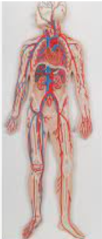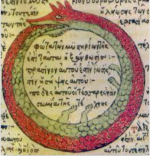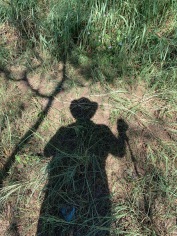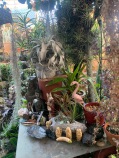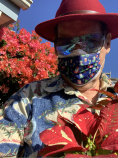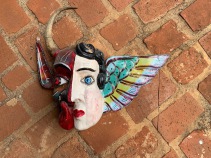Following the Body Schema
The problem of consciousness cannot be ignored. I do not claim to be able to answer any of the thorny questions but I know some things and see some things.
The Body Schema is, physically, not a substance, in the way, say, mucus is a substance. And the Body Schema is functionally a substance, very similar in function to a mucus.
There is a fun little set of words that are called contronyms. These are words that mean one thing and its opposite. Same spelling can mean this or the opposite to this. Mucus is like a contranym. It is like the word cleave, which can be used to mean adhere too or it can mean to split off from. Mucus cleaves to and slides on. Body Schema is a thing and not a thing.
Body Schema is a term from neuroscience. I suppose it is a concept. But it is a concept in a way similar to how a circulatory system is a concept. You can grossly dissect all the tubes out, It has tubes. You can fill the tubes with colored rubbery goo and stand it erect, take photos. You can do surgery and make repairs. It serves a vital function. The Body Schema, on the other hand, cannot be seen or touched or disected out. It cannot be made to stand alone (but maybe it can; more on this when we get to magic*). It does serve a vital function.
[I should have known better. I had not realized how long was the break I took. I came back to continue writing and did a whole brilliant page, paused for breath and up possed the little box telling me I had timed out and need to log lin again. Everything I'd written had vanished. Perhaps (unlikely) I could write the same words again. A phrase that sounded grand at that time, in running out again might sound overblown, too cute with the wordplay (my nod to Heraclitus) and that's exactly what I'm talking about. Get back to what's most important to communicate, to explore this thing called Body Schema. I take another run at it, another tack.]
The term has been rumbling around the Scientific Wordhoard starting maybe 1911 for sure solidly there by 1920. There's many an interesting story in there. Rummage about in the History of Science wing. There's a big war tucked in that range of years.
Looking through the published literature, I sort into two big catgories: Scientific (journal articles, texts) and Popular. The first room is rather full, the second near empty and waiting to be filled. This requires hermeneutical work, taking texts written in obscure mathematical language and highly technical jargon, and transform them into something that makes an equivocal sense in common parlance.
And more than that, What can I do with this?
In getting a BS degree at a university and a nursing degree as well I have had to take a fair amount of Anatomy & Physiology. I remember the stuff pretty well, do regular brush-ups. In no academic setting do I recall having come across this term, Body Schema. In years of studying various forms of bodywork, taking trainings, reading writings, do I recall stumbling over the Body Schema. I have searched the set of standard Anatomy & Physiology texts and not find it indexed.
I get a hint of the sickly-sweet scent of avoidance.
I recall from what I had written on the wind that the topic of magic* came in about here, or a bit further down.
The Scientific Literature I refer to can be found scattered through many Scientific specialties and subspecialties. The Body Schema is of obvious interest to neuroscience; you might say they own the word. It's of interest in several other disciplines, like cybernetics and AI. Cognitive scientists are paying attention.
Perhaps this is the detonation squad, carefully unwrapping this curious package. A limb could get blown off, or worse.
There's magic* spoor all over this. There is this gap and mind the gap. The junction of thought and deed. There is a seeming boundary, a line to cross and what had been mere thought, substanceless, is now action, agency, purpose, and even meaning. The mysterious relationship between mind and matter. Be careful falling into the gap.
Now along with all the subdisciplines of Science we find ourselves snug up against philosophy, phenomenology, theology. With theology comes religion and magic* (these two cleave together inspite of the efforts of the mighty Mauss to cleave them apart). They are the Religicomagical.
Some history may help. It's usually picked up with René Descartes (1596–– 1650) though we could if we want go back to Greeks and maybe Babylonians. We don't want to.
Descartes really got this science thing going to a roaring start. To be able to do that though he had to arrive at some sort of understanding with the Church –– or They might burn him alive. Dualism was not invented here, it had been around a long time. Here it became institutionalized. One kind of substance is the physical world and another kind of substance is the spiritual world. Mind and matter, mind and body, two things, one 'inhabiting' or riding around in the other. There is such a cartoon quality to this that it is remarkable it took such a strong hold in the (western) culture. Maybe because it is so cartoonish.
Then along came Kant (1724–– 1804). Immanuel Kant is too vast to give any concise account here. Take a side trip and read about him. It is said by those in authority that all of Kant's thinking rests on the notion of human autonomy. This has become a major underpinning assumption of Science. But there is this little dark corner of science calling that autonomy into question.
A bit more history. Presumably entailed in Descartes' pact has been a longstanding taboo against applying the methods of science on the phenomenon of Consciousness. This sanction has recently lifted and all sorts of Scientists are dipping their toes in this water without fear of a clubbing or being tossed out of the Club.
There are even a few who are starting to look in the right direction.


